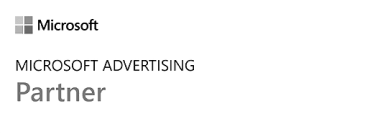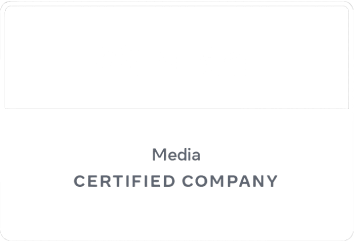- Home
- Email Marketing
- Learn
- The Beginner’s Guide to Effective Email Marketing: How to Write and Send Your First Email
The Beginner's Guide to Effective Email Marketing: How to Write and Send Your First Email








The first email you send – though it will be one of many – is important because it sets the tone for the entire experience your subscribers will have with you. Although your subscribers may not know it’s your first email, the way they react to it can have an enormous impact on how you handle your marketing moving forward.
Tips for Your First Email
Let’s go over a few things you should keep in mind while putting together this significant first message.
Don’t Celebrate (Too Much)
The fact that you’re sending your first email is probably a big deal to you and your business. But it’s not going to matter too much to your subscribers, especially if they’re under the impression that you’ve been doing this a long time.
If you want to mention that your email is your first, go for it! But try to avoid patting yourself on the back too much. Instead of celebrating this accomplishment, you should create an opportunity to ask for feedback or suggestions.
For example, you might say something like this:
Welcome to the [Company Name] email! Each month, we’ll be sending you [short summary]. We welcome your feedback on these messages, so if you ever have any questions, comments, or concerns, please click “Reply” and let us know your thoughts. Thanks for signing up!
This can also help personalize or “humanize” your emails, making subscribers more likely to see you as a company that cares about what its subscribers think, not just one that’s looking to make money.
Content First, Design Second
As we already mentioned, you should determine the content of your email before designing anything around it. This may not be an issue for anyone using a stock template or wireframe that doesn’t really change from message to message, but it should be something you keep in mind if your emails utilize heavy graphic design or avoid templates altogether.
If you’re not using a template, try to create your content or select the products you plan to highlight, then sketch out or design a quick wireframe of what you want the message to look like. This can help the graphic designers you may be working with put together something that fits flawlessly.
Don’t Be Afraid to Be Human
As we mentioned in our chapter on email strategy, the “from” field is pretty important. Your tone, copywriting, and even the content of your email will all hinge on who your messages are sent from – an individual, a group, or a business.
Even if you’re sending as a business, don’t be afraid to add a human element to your emails. This may mean keeping your tone casual and relatable, or it may mean doing something like highlighting one of your employees and the work they do.
If you’re sending emails from a single person who is identified in the email, this human element should be emphasized even more. This goes beyond using “I” – it means your writer should include elements of their personality. This might mean mentioning something they’re interested in, or just including a personal experience or telling a story as a way to discuss a specific topic.
Feedback Can Be Crucial
It’s going to be difficult to get any feedback on your emails from subscribers. For the most part, they’re going to want to read your emails, take action, and then delete them. “Tell the company what I think of them” probably isn’t on their to-do list.
Having said that, you can encourage feedback and responses just by asking for them. Encourage your subscribers to hit reply if they have something to say, and mention that their emails will all be read. (Don’t ask them to email another address – it takes too much time, and that will reduce your chances of hearing from them even further.)
Why should you ask for feedback? Well, sometimes it’s the best way to know what is or isn’t working. Although you shouldn’t necessarily put stock in the opinions of a single subscriber, multiple responses can help paint a clear picture of what you’re doing right or where you have room for improvement.
Asking for feedback (or simply stating that you’re open to responses) can also make your business look more open and trustworthy. By making even a simple statement like “click reply to get in touch,” you’re showing that you’re listening – and that’s something that potential customers or leads will really respect.
Writing Your First Email
Now that we’ve gone over these crucial tips, you’re ready to write your first email. Remember everything we’ve taught you!
Writing your emails – especially this first one – shouldn’t consist of simply dumping text into your template and clicking send. Instead, you should aim to have one or more people within your company look at the content, offer their feedback, and act as a proofreader.
The emails you send should be as perfect as possible, as far as spelling and grammar are concerned. Your subscribers are likely to notice mistakes like these, and they could reduce the trust they have in your company. After all, if you don’t have attention to detail on your emails, what kind of attention to detail will you have when it comes to their orders or business partnerships?
Spend as much time as you feel you need putting together the content of your first message. There’s no right or wrong amount of time for writing an email; if it feels like it takes a long time, remember that you’ll get faster at it as you gain more practice.
Design and Images
Don’t forget to add some visual interest to your messages in the form of images or the design of your template. If your emails are text-heavy, adding images can break up large blocks of content and keep your subscribers interested for longer.
Something to keep in mind when you’re adding design elements or images is that they may not initially load in certain email clients, or won’t be seen at all if your subscribers are looking at the plain text version. So it’s important to add alternate text just as you would on a website. You can usually do this right within your email client, or by adding the alt=”text” attribute to the image tags in the HTML version of your message.
Sending the Email
Once your email is written, proofread, added into your template, and checked one more time for accuracy and compatibility, you’re ready to send it to your list.
If possible, you should aim to send your first email during a time that you are actually in the office and able to monitor everything closely. Since this is your first message, you’ll want to make sure that your platform doesn’t have trouble sending to your list, that your design looks as you intended, and that you’re ready and able to respond to any feedback you may receive (both internally and from recipients).
Of course, you may be wondering exactly when you should send the email. What time is best for email messages? Or is there an ideal day of the week you should send on? What about A/B testing? Wait, what subject line should I use?
We have some answers for all of these questions. Check out the next chapter on email best practices to get some data on things like send times, subject lines, A/B testing, email length, and much more.
Go Back Start Reading: Email Best Practices →
Related Resources
- The Beginner’s Guide to Effective Email Marketing: Email Automation and Drip Campaigns
- The Beginner’s Guide to Effective Email Marketing: Email Content 101
- The Beginner’s Guide to Effective Email Marketing: Email Design 101
- The Beginner’s Guide to Effective Email Marketing: How to Create an Email Program That Gets Results
- The Beginner’s Guide to Effective Email Marketing: Which Email Platform is Right for You?
- The Definitive Email Marketing Guide for SMBs Looking to Drive Revenue
- The Non-Designers Guide to Creating Stunning Email Graphics [+ Inspo!]
- Beginners Guide to Holiday Email Marketing – Think Post-Holiday!
- Email Marketing Design Guide (Plus 7 Best Practices for 2025)
- How to Write an Email Marketing Report for Your Team
Marketing Tips for Niche Industries
- Insurance Email Marketing for Agents & Companies
- Real Estate Email Marketing: Your Guide to Email Marketing for Realtors
- Simple and Successful Email Marketing Tips for Construction Companies
- Simple Email Marketing Tips for Home Services Companies
- 29 Healthcare Email Examples to Inspire Your Strategy
- 3 Effective Heavy Equipment Email Marketing Strategies
- 4 Email Marketing Tips for Higher Education
- 4 Email Marketing Tips for Pest Control Companies
- 4 Email Marketing Tips for Pest Control Companies
- 5 Benefits of Email Marketing for Restaurants
